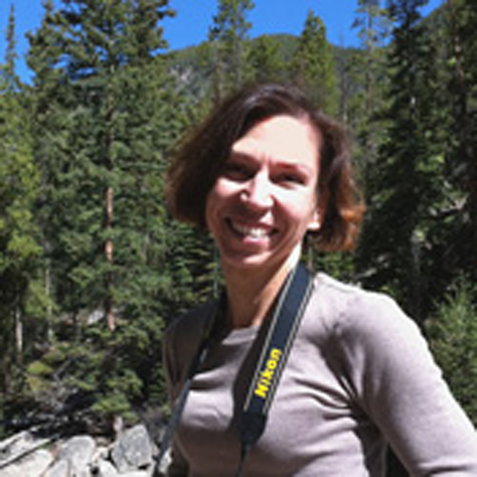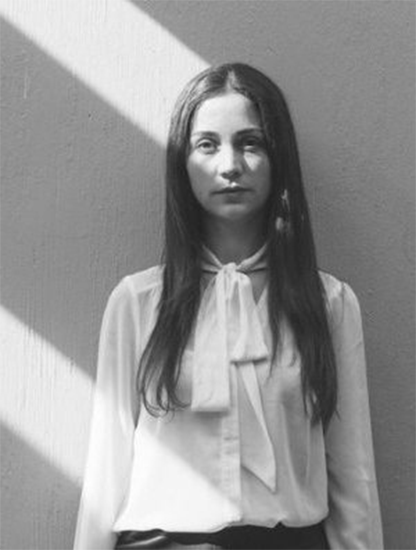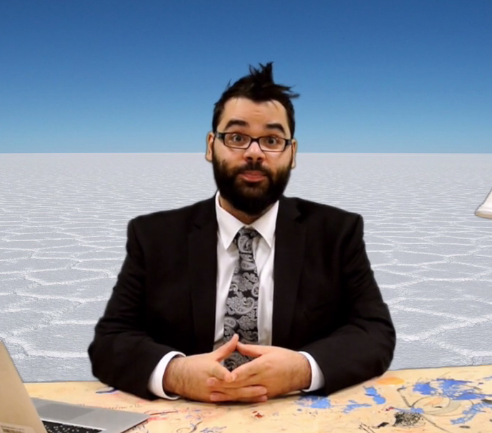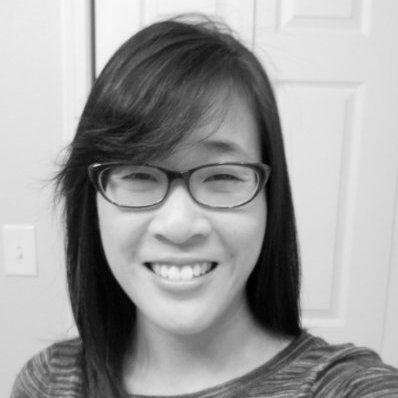The newest ART21 Educators joining the program for Year 6 teach across the country and beyond. This week we’re introducing four educators teaching in New Orleans, Louisiana; Guadalajara, Mexico; New York, New York; and Suwanee, Georgia. Ann, Daniela, Nick, and Amber teach art, art history, and their own artistic practice to both fellow teachers and students from kindergarten to college.
 Ann Schwab is an artist and an educator, teaching at the New Orleans Center for Creative Arts in Louisiana. For the past 18 years, she’s taught hundreds of high schoolers her craft of creating in studio art classes. She designs all her curriculum independently, and even organizes informational displays on contemporary artists like Kiki Smith, Kara Walker, and Mark Dion in the stairwell of her school’s building.
Ann Schwab is an artist and an educator, teaching at the New Orleans Center for Creative Arts in Louisiana. For the past 18 years, she’s taught hundreds of high schoolers her craft of creating in studio art classes. She designs all her curriculum independently, and even organizes informational displays on contemporary artists like Kiki Smith, Kara Walker, and Mark Dion in the stairwell of her school’s building.
“It is important to me that they become aware of how artists (themselves included) can tackle issues in metaphorical ways,” she said of her students. “Whether addressing broad ideas—such as the environment or social justice—or intensely personal notions of identity and self, I want my students to use their artwork as a way to give voice to their beliefs.”
 Daniela Cadena teaches at Centro Educativo La Barranca just north of Guadalajara, Mexico. Instead of teaching students, Daniela teaches the educators who in turn teach students. This year, she’s instructing 21 educators who will teach 360 students from elementary to junior high school. Through her work, teachers and students alike become better acquainted with visual art as a medium, and art education as an interdisciplinary subject, using both to build knowledge and think more critically. She’s taught for nearly eight years, and is constantly stretching the bounds of learning through innovative lesson plans involving improvisations and sound associations.
Daniela Cadena teaches at Centro Educativo La Barranca just north of Guadalajara, Mexico. Instead of teaching students, Daniela teaches the educators who in turn teach students. This year, she’s instructing 21 educators who will teach 360 students from elementary to junior high school. Through her work, teachers and students alike become better acquainted with visual art as a medium, and art education as an interdisciplinary subject, using both to build knowledge and think more critically. She’s taught for nearly eight years, and is constantly stretching the bounds of learning through innovative lesson plans involving improvisations and sound associations.
“I work in a vulnerable country in many ways; the most crucial one is the socio-cultural seclusion of a vast majority,” she said. “In one word, Contemporary Art Education is empowerment… Contemporary art is everyday life. It’s about the possibility of transforming quotidian matters into an aesthetic experience, where beauty relies in the awakening the work is capable of producing, both in the artist and spectator.”
 Nick Kozak is an artist educator teaching high schoolers at Manhattan Hunter Science High School in New York, and graduate students at New York University’s Steinhardt School of Culture, Education, and Human Development. His sculpture, performance, installation, and video works question the connections that exist between people through art, social justice, and radical pedagogy. He’s been an educator for more than eight years, teaching studio art, art education, and art history to more than 140 students each year.
Nick Kozak is an artist educator teaching high schoolers at Manhattan Hunter Science High School in New York, and graduate students at New York University’s Steinhardt School of Culture, Education, and Human Development. His sculpture, performance, installation, and video works question the connections that exist between people through art, social justice, and radical pedagogy. He’s been an educator for more than eight years, teaching studio art, art education, and art history to more than 140 students each year.
He works with students to develop an understanding of contemporary thought-provoking installations, such as Kara Walker’s A Subtlety. Presented by Creative Time in 2014, the large-scale public sculpture had a strong impact on his classes. Upon visiting the installation at the Domino Sugar Factory, his students grappled with frustration as they witnessed fellow visitors treating Walker’s mammy sculpture in the same way those with darker skin have been treated historically: as objects. “Adding contemporary artists to my curriculum offers students the chance to be fully immersed in the very real present of our world’s issues,” Kozak said. “It’s sometimes difficult material to cover, since most contemporary art is outside of what most people think art is supposed to ‘do’ within a museum or gallery setting.”
 Amber Arnold works at Level Creek Elementary School in Suwanee, Georgia, teaching art to kindergarten through fifth graders. Her curriculum echoes the style of the first seven seasons of Art in the Twenty-First Century, with each grade level taught through a year-long overarching theme like identity or change, that explores artistic creation through various methods and materials. She’s beginning her tenth year of teaching this fall, bringing the work of contemporary artists to hundreds of young learners.
Amber Arnold works at Level Creek Elementary School in Suwanee, Georgia, teaching art to kindergarten through fifth graders. Her curriculum echoes the style of the first seven seasons of Art in the Twenty-First Century, with each grade level taught through a year-long overarching theme like identity or change, that explores artistic creation through various methods and materials. She’s beginning her tenth year of teaching this fall, bringing the work of contemporary artists to hundreds of young learners.
“When I started at my school, one of the first questions students frequently asked was ‘Is he dead?’” she said. “Receiving the ‘Is he dead?’ question so often solidified my beliefs and desire to teach with contemporary art and artists… The questions have changed to ‘When were they born?’ or ‘Where do they live?’ I feel this is an important change in my students’ questioning. They are interested and curious in new ways!”




